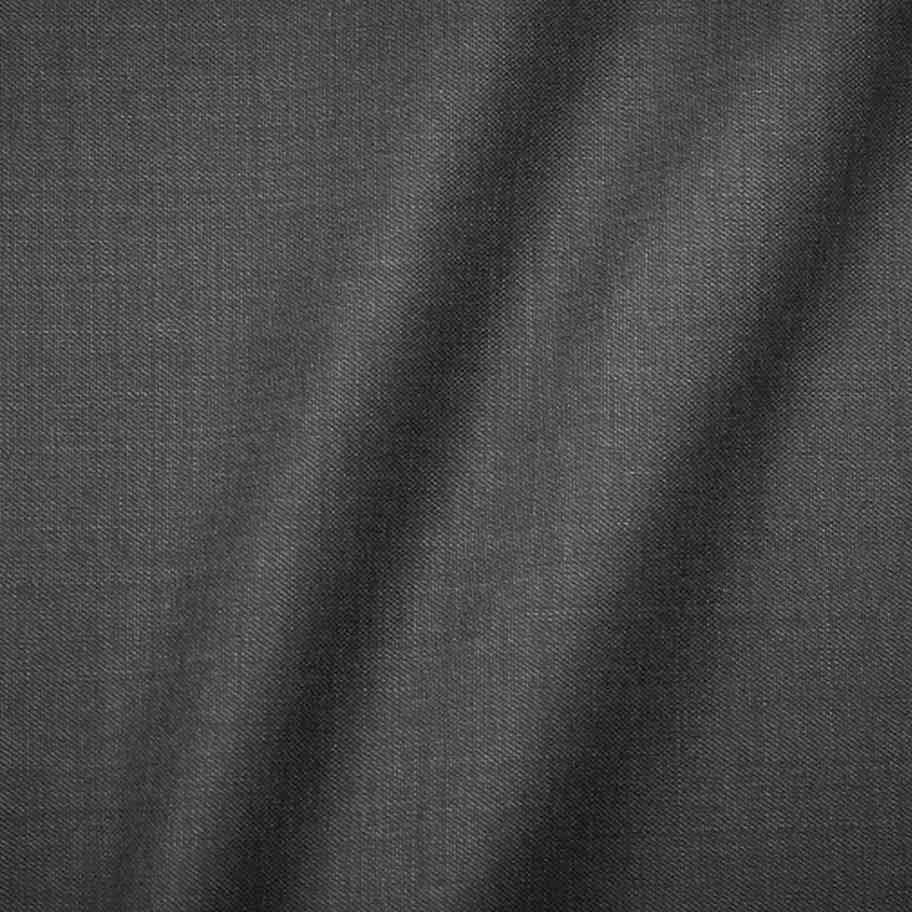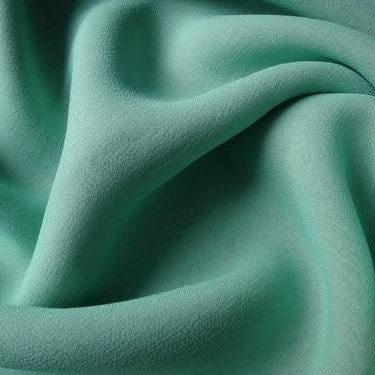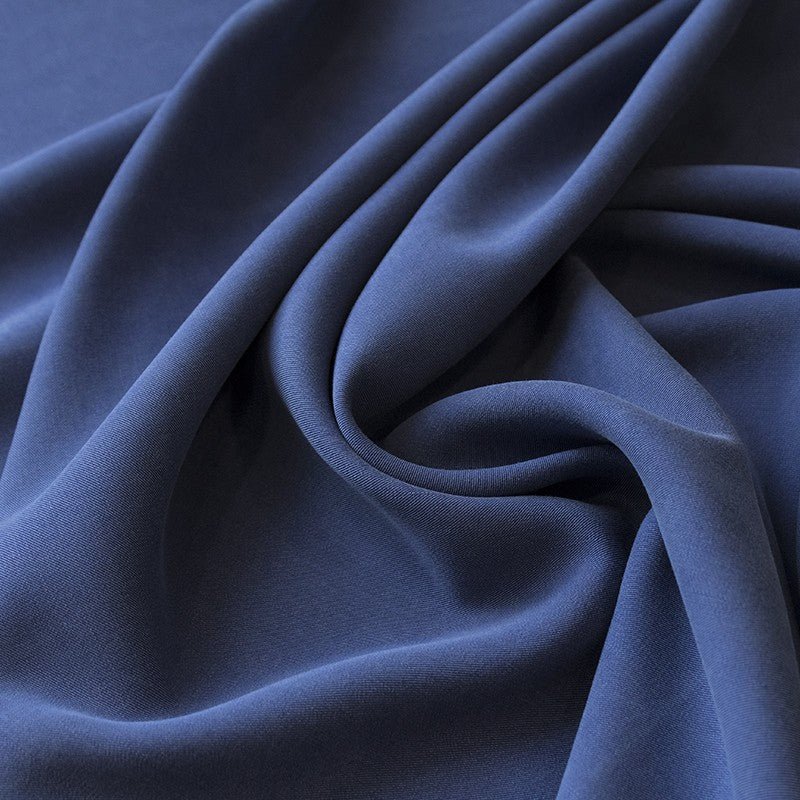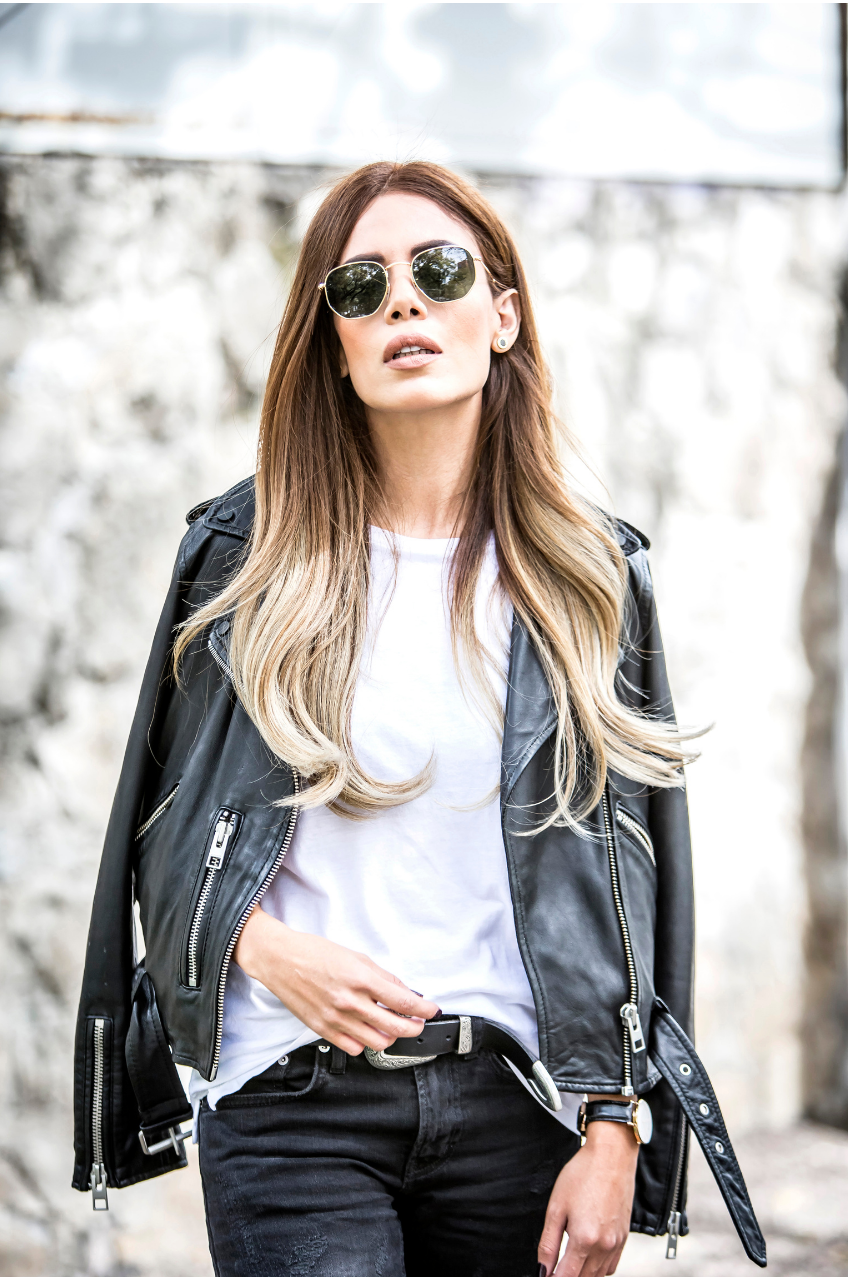Fabric Types and Mixing Textures
Fabrics are an integral part of a garment and play an important role in your clothing decision. Generally, a set number of yarns are used for the formation of fabrics. Also, several techniques are used for producing fabrics such as weaving, knitting, and felting. The type of fabrics varies by the fibres, the fabric formation techniques, machinery used for producing them, and finishing techniques. Fabrics can also be made differently based on the end-user.
Fabrics are made from six main sources (the first three are natural) :
1-Animal: They are commonly made from hair, fur, skin or silk: wool, cashmere, mohair, angora, silk
2-Plant: They are collected from seed cases, leaves or stem of a plant: cotton, flax, jute, bamboo, hemp, modal
3-Mineral: Glass fibre, metal fibre, asbestos
4-Synthetic: Produced through the chemical process from fossil fuels: nylon, polyester, acrylic, rayon, spandex, aramid. Synthetic fabrics have some qualifications such as being waterproof, wrinkle-free, soft, stain-resistant, etc.
5-Semi-synthetic: They are combined with natural plant fibres and chemicals such as viscous.
6-Blends: Combination of different fibres to improve the performance, and texture and reduce the cost.
Natural fibres are more breathable and hypoallergenic while synthetic fabrics are less breathable and may irritate the skin. On the other hand, they are more expensive and difficult to care for while synthetic ones are less expensive and easier to care for, they are more suitable for athletic wear because of their qualifications.
Types of Natural Fabrics for Clothing (incl. originals)

Cotton
A natural fibre that grows in the seedpod of the cotton plant. It is soft, breathable, lightweight, hypoallergenic, and durable. Used mostly for summer clothes, everyday garments, like t-shirts & heavyweight hoodies, and home items such as bed sheets.

Linen
Made from fibres obtained from inside the woody stem of the flax plant. The fibres are much stronger and more lustrous than cotton. Linen fabrics are very cool, breathable, durable, and absorbent but wrinkle very easily unless blended with manufactured fibres. Used for household items, summer clothes and an inner layer of jackets.

Hemp
An eco-friendly fibre obtained from the stalk of the plant “Cannabis sativa.” It is light weighted, breathable, strong, absorbent and easily bleached. The better grades are used in the manufacture of carpets.

Silk
Natural filament fibre is produced by the silkworm in the construction of its cocoon. Most silk is collected from cultivated caterpillars and comes from Asia. It is known as one of the finest textiles because of its softness, delicacy, and radiant sheen. Used for formal attire, accessories, scarves, evening gowns, bedding, upholstery, etc.

Mohair
Made of hair fibres of Angora goat, durable, hypoallergenic, insulating, resilient and notable for its high lustre and sheen, often used in fibre blends to add these qualities to a textile. Used for winter clothing such as sweaters, coats, gloves, and scarves.

Camel Hair
A Natural fibre obtained from the hair of the Bactrian camel, the highest grades are tan-coloured, fine, and soft. It also has high resiliency and is more insulating than wool. Used to make coats, sweaters, and suits.

Leather
Durable and flexible material created by tanning animal (cattle) rawhide and skins. Different leathers result from different types of animals and different treatment techniques. It is light weighted, durable, liquid repellent and weather resistant. Used to make outwear and accessories.

Fur
Clothing is made of furry animal hides, like fox and beaver. Its strong, durable, and best for keeping warm and used for winter outfits such as coats, scarves, gloves, and hats.

Jute
The natural fibre is woven from long, soft, and shiny vegetable fibre from the plant Jute. It is extremely durable and biodegradable. Used to make shoes, rugs, and decorations.

Merino
A type of high-quality wool made from the fleece of purebred merino sheep. It is fine, strong, stretchy, breathable, odour-resistant, moisture-wicking and dye-retentive, one of the softest forms of wool and doesn’t aggravate the skin. Considered a luxurious fibre and is used frequently for socks and outdoor clothing.

Moleskin
A heavy cotton fustian cloth with a great number of picks raised before dyeing, resulting in a brushed surface. Used for workmen’s clothing and sportswear.

Suede
The softer side of the leather, which has been brushed, leaves a velvet-like texture. It is made from the hide of a lamb through goat, pig, cow, calf, and deer. Durable, pliable, and due to its thin nature can be molded and crafted easily. Used for footwear, jackets, and accessories, like belts and bags.

Egyptian cotton
Finely woven, soft, high-quality cotton from Egypt. This high grade of cotton boasts the longest and strongest fibres

Boiled Wool
Primarily used in creating berets, scarves, vests, cardigans, coats, and jackets. To create this fabric, knit wool or wool-blend fabrics are agitated with hot water in a process called fulling to make it more resistant, more compact, and waterproof.

Chiffon
Lightweight, sheer fabric with a very good drape and a crepe-like feel. It is made of twisted filament yarns with a soft weave. Usually woven of silk, rayon, and other synthetic fibres. Used in making dresses and lingerie.

Flannel
An all-wool fabric of plain or twill weave, usually quite pure and soft since it is worn as underclothing. The best flannel is made from fully shrunk yarns with a slight twist.

Gabardine
Sturdy fabric with a twill weave that can be made of cotton, wool, or synthetic fibres. Used to make suits, overcoats, trousers, uniforms, windbreakers, and other garments.

Jersey
A soft, breathable, stretchy, knit fabric that was originally made from wool and now cotton and synthetic fibres. Used for tops and fuller dresses as well as a variety of other clothing and household items.

Velvet
Woven, medium weight, tufted, luxurious fabric made of silk, nylon, acetate, or rayon. Characterized by a dense pile of evenly cut fibres that have a smooth nap. Has a beautiful drape and a unique soft and shiny appearance due to the characteristics of the short pile fibres. Popular for evening wear, home decor and upholstery.

Bamboo
Fabric incorporating bamboo fibres is eco-friendly durable and strong. They are porous, breathable, and absorbent. Due to their versatile properties, they are used mainly in the textile industry for making attires, towels, and bathrobes.

Denim
Sturdy, warp-faced, heavy-weighted rugged coarse, durable, twill-weave cotton fabric; prominently used to make jeans and casual wear.

Canvas
An extremely durable plain weave fabric made of cotton or linen. By blending cotton with synthetic fibres, it can become heavy-duty, water resistant or waterproof material making it a great outdoor fabric for sails, tents, shoes and backpacks.

Chenille
Incredibly soft, woven fabric that can be made from a variety of different fibres, including cotton, silk, wool, and rayon, mostly used in upholstery.

Georgette
Type of sheer, crinkled, crêpe fabric that is typically made from pure silk but can also be made from synthetic fibres like rayon, viscose, and polyester, it is woven from hard-twisted yarns to produce a pebbly surface and creates a lightweight, flowing look. Used for blouses, dresses, evening gowns, saris, and trimmings.

Crepe
Refers to all fabric, silk, wool, or synthetic fibre fabric with a distinctively crisp, crimped appearance. Special hard-twisted yarns are used to create a permanent effect. Used for blouses and dresses with a graceful drape.

Fleece
Soft, smooth, and insulating fabric with a nap, made from sheared fibre from animals (such as sheep) and twisted into yarn for weaving. Synthetic ones almost mimic the properties of wool. Used for jackets, hats, jumpers and throw blankets.

Chino
Twill fabric, originally made of 100% cotton, the most common items made from it, trousers, are widely called chinos, today it is also found in cotton-synthetic blends.

Drill
Very durable cotton twill fabric used in men’s and women’s slacks. It is a medium-weight coarse fabric. When dyed a khaki colour, the drill is also called “khaki”.

Twill
Woven cotton fabric is characterized by distinct, diagonal lines on the surface, often a darker coloured front side with a lighter back. Its strong, durable, relatively light-weighted and drapery, therefore used for suits, pants, denim, chinos, upholstery, and bed linens.

Charmeuse
Soft, shiny, smooth, light-weighted fabric woven with a satin weave finish and dull matte back. Made of silk, cotton, or synthetic fabric and use for dresses and other clothing.

Melton
Traditionally made of wool and is woven in a twill form; thick, dense tightly woven fabric that is felted and heavily brushed for an ultra-soft hand. Used for coats, jackets, vests, blankets, and historical clothing replications.

Duvetyne
Soft, plush, high-quality fabric that looks like velvet, has a matte finish and its high opacity makes it ideal for blocking light, also called commando cloth. It may be woven from cotton, wool, or silk, used for dresses, suits, and coats.

Taffeta
Crisp, a medium weight, plain-woven fabric made often from silk, also polyester, nylon, or acetate. Has a lustrous, shiny appearance and is therefore used to make ball gowns.

Tweed
Rough, woven fabric is usually made from wool. The fibres can be woven using a plain weave or twill weaves. It is an extremely warm, thick, stiff hard-wearing fabric, popular for suiting and jackets, which were originally made from the material for hunting activities.

Organza
Lightweight, sheer, plain-woven fabric that was originally made from silk, also polyester and nylon. Crisp and sheer with a medium to high thread count, characterized by very small holes throughout the fabric. Popular for wedding gowns and evening wear, as it is the shimmery and translucent quality which creates decadent silhouettes.

Poplin
Tightly woven plain-weave fabric (usually lightweight cotton) characterized by a corded surface. A durable fabric, made of cotton but can also be silk, wool, or synthetic blends. It does not wrinkle much and is popular for making shirts and dresses.

Wool
A thick, heavy natural fibre that comes from the fleece of a sheep, goat, llama, or alpaca. It can be knitted or woven. It's warm, resilient, moisture-wicking, easy to dye, and difficult to bleach. Used to make any type of clothes such as suits, knitwear, underwear, and socks.

Cashmere
Incredibly soft wool is made from the downy undercoat of cashmere goats and pashmina goats. The fibres are very fine, light, soft and delicate, feeling almost like silk fabric. Considered a luxury fibre which is used to make warm winter clothes such as shawls, sweaters, and knitwear.

Angora
It refers to the downy coat produced by the Angora rabbit. This is different from Mohair which comes from the Angora goat. Used to make sweaters and accessories. It is silky, thin, and easy to blend and dye.

Alpaca Wool
It is the natural fibre harvested from an alpaca animal (South Africa) which can produce fleece throughout its life without being harmed. Light, very soft, resilient, durable, insulating, warm and hypoallergenic, ideal for winter clothing.
Types of Synthetic Fabrics

Acetate
A manufactured fibre formed by a compound of cellulose, refined from cotton linters and/or wood pulp and acetic acid. Has a smooth, and drapy, silk-like texture, used especially in wedding gowns, party attire and as lining.

Acrylic
Made of synthetic polymer, manufactured fibre that is soft, lightweight, warm, durable and wool-like, used in winter wear, such as sweaters, socks, hats and fleece.

Lyocell
Form of rayon that consists of cellulose fibre made from dissolving pulp using dry jet-wet spinning. It is (cotton-like) soft, lightweight, absorbent and wrinkle-resistant, keep the skin dry, great fabric for sensitive skin. Used to make shirts and underwear.

Modal
Made with cellulose from beech trees and is essentially a variety of rayon. It is (cotton-like) soft, smooth, shape-retentive (even when wet), durable, colour-rich, and lustrous. Primarily for clothing, such as underwear, pyjamas, activewear and household items, adds anti-crease and easy-care qualities.

Felt
A strong, non-woven fabric made from wool or acrylic by the application of heat, moisture and pressure. Varying in thickness, density, and softness, felt doesn't fray when cut so is often used in quick and easy craft projects, home decorations, teddies, and quirky hats.

Vinyl
Shiny, durable, plastic-coated, water-resistant fabric is typically made with a woven backing of polyester fibres that are then coated with polyvinyl chloride or a blend of PVC and polyurethane. Its commonly used for outdoor clothing, raincoats as well as high shine skirts, dresses, leggings and pants.

Polyester
Made of petrochemicals (ethylene glycol and terephthalic acid) and has high strength, excellent resiliency, colour retention, wrinkle resistance, high abrasion resistance and dries quickly. Polyester blends are also very popular for activewear and men's formal wear, specifically ties & neckties.

Satin
Silky, glossy finish on one side and a dull finish on the other, made so by the type of weave used. It has a smooth, shiny surface and a beautiful drape. It comes in different weights (light to heavy) and is like silk in appearance. Used for lingerie, nightgowns, blouses, evening gowns and bedsheets, and upholstery.

Faux Leather
Made of synthetic fibres to resemble animal leather and suede. Made from a plastic base and treated with wax, dye, or polyurethane to create the colour and texture. Used for jackets, pants, skirts, gloves, home decor and upholstery.

Viscose
Semi-synthetic type of rayon fabric made from wood pulp that is used as a silk substitute, as it has a similar drape and smooth feel to the luxury material. Used for summer clothing, home decor and upholstery.

Faux Fur
Made of synthetic fibres to resemble animal fur. Faux fur is a knitted, synthetic fabric made from a blend of acrylic and polyester fibres. Used for coats, jackets, and home decor.

Elastane
Elastane is just another name for spandex. The word "elastane" is used in Europe while "spandex" is used in the United States. Elastane/spandex trade names are Lycra and Dorlastan. It is lightweight, elastic, and soft, but stronger and more durable than rubber and is used in compression garments, swimwear, and bras.

Nylon
Completely synthetic fibre is known for its superior flexibility and excellent resilience. It’s often added to natural fibres to boost a garment’s durability and can be found in everyday clothing. Commonly used for stiff outwear items such as sports shoes and jackets as well as handbags and activewear.

Microfiber
An ultra-fine, soft, stretchy, light-weighted synthetic fibre made from usually polyester or nylon, stain-resistant, and used in clothing and cleaning products because it is non-abrasive, absorbent and leaves no lint or dust.

Neoprene
An extremely durable synthetic rubber that is lightweight and buoyant, and has outstanding temperature resistance, and chlorine, used for swimwear, outerwear, and high fashion clothing.

Rayon
Semi-synthetic, silk-like, extremely versatile material made from wood pulp or other vegetable matter, is often used to substitute natural fibres in the clothing. It’s known for excellent softness, drape, high absorption, and a lustrous look. Used to make everything from shirts to dresses.
How to Mix Textures

Playing around with texture is a great way to mix things up in your wardrobe. By layering different textures, you can create a distinct and stylish look. Even all solid colour look becomes eye-catching when the pieces are all the noticeably different materials.

Corduroy
Made from cotton or wool, corduroy comes in a rainbow of shades. Mostly used for pants and jackets and other casual outfits.

Denim
Denim is a strong cotton fabric and the most common texture which can be combined with anything. Other than jeans, denim is commonly used for vests, jackets, hats, and bags.

Lace
Lace has a very feminine feel, and its delicate structure gives it a sweet, yet sophisticated vibe. It softens your outfit and gives you a sexy or edgy look depending on how you style it.

Satin/Silk
Silk has a sleek and shiny texture, it’s an excellent choice for formal attire. It lends a luxurious/glamorous vibe to any outfit. Its commonly used for dresses, button-down shirts, and Cami tops.

Flannel
It is a soft woven fabric typically made from cotton. It is a common material for plaid shirts.

Cashmere
Considered a luxury fibre which is used to make warm winter clothes such as shawls, sweaters and knitwear.

Leather
Leather is the ultimate fabric for an edgy fashion vibe. Leather can truly fit any occasion, especially leather jackets and leather handbags that can each be styled & accessorized in hundreds of different ways.

Suede
It is softer, thinner, and more delicate than traditional leather. Suede is ideal for footwear, jackets and accessories like belts and bags.

Mesh
Due to its transparency, it is a fun texture to layer into your outfits. They are eye-catching and can be the perfect bold addition to any outfit.

Plush
Plush garments give a fluffy feel and you will look extra comfy in these pieces such as big plushy jackets.

Cable Knit
It is a casual texture that gives comfort and warmth, also a great layering piece for a textured outfit. Sweaters, cardigans, socks, and gloves are examples of some cable knit textures.

Seersucker
It is a type of thin cotton cloth. The way it is woven causes the threads to pucker and bunch, creating crinkles. Its commonly used for summer clothes.

Brocade
It is a type of jacquard fabric that uses additional threads to create a raised pattern, resulting in an embossed or embroidered effect.

Jersey
It is a soft, stretchy knit fabric that was made from wool, cotton, or synthetic fibres. Due to its light-to-medium weight, it is used for a variety of cotton clothing items, such as T-shirts.
There is no exact formula for mixing textures. However, there are some common rules about how to combine them which can help to determine the focus of the style.


1. Use textures that compliment each other: Think about the context in which you might wear a particular material, then pair that material with other textures to subvert expectations. Denim is a casual texture that you can dress down other outfits but if you pair it with silk or lace, you will create a relaxed yet stylish evening look. These textures compliment each other so well as they are true opposites. The sheen and softness of silk with the more rough and scratchy feeling of denim create a perfect balance. You’ll end up with the ideal composition for a dressy, but not too much.
2. Pair neutral textures with more attention-grabbing ones: Simple textures can serve as a neutral base for wilder textures. Denim, cotton fabric, leather and suede are some of the most basic textures that play well with other textures. There are some exceptions for this style, corduroy and loose cable knit sweater would be a good example. They are both neutral and casual textures yet offer a different pattern that just connects so well. Paired together, they create a perfect put-together, comfy winter outfit.




3. Sticking to a more limited colour palette will give you free range to play with different kinds of textures: You can use neutral colours to anchor your look or choose two or three solid colours that work together.


